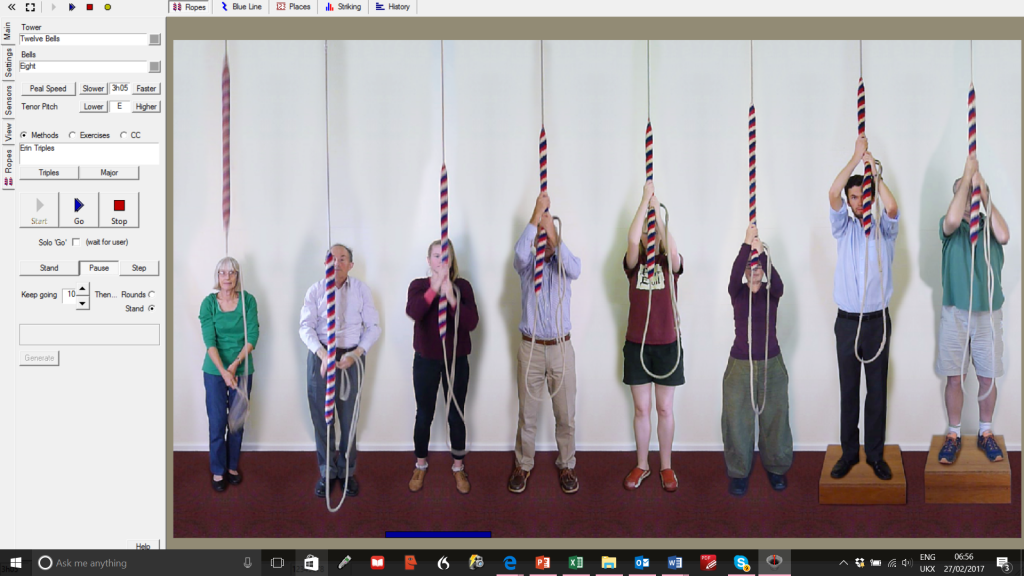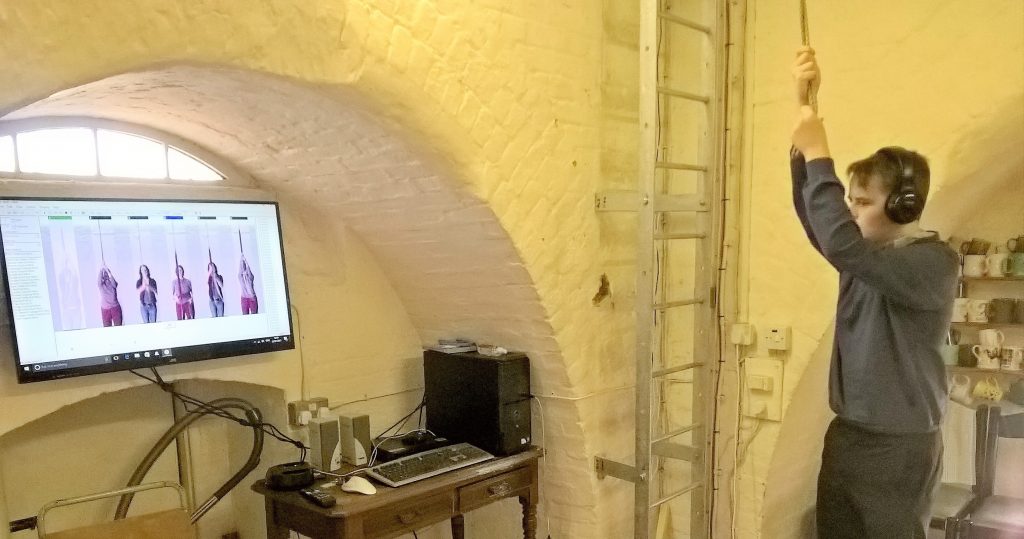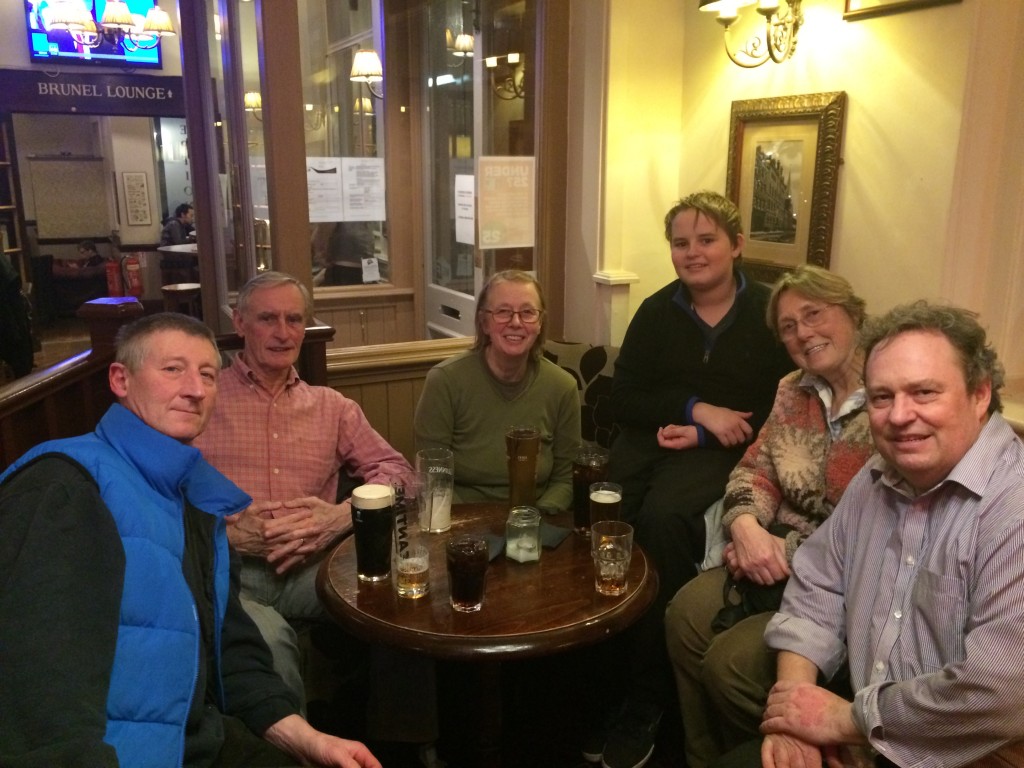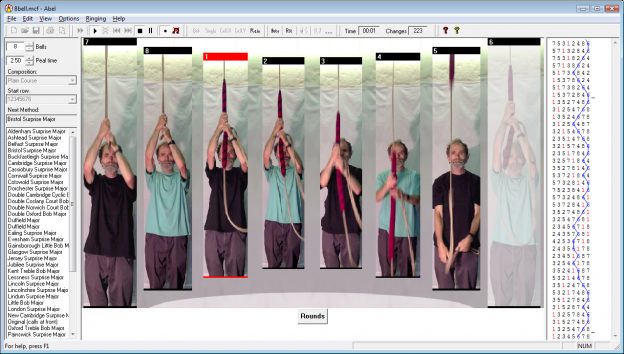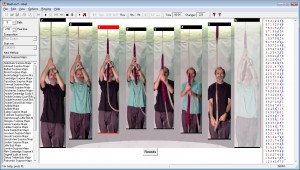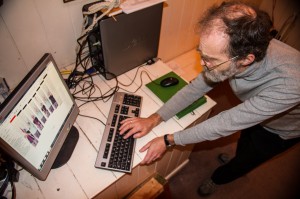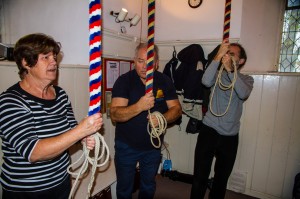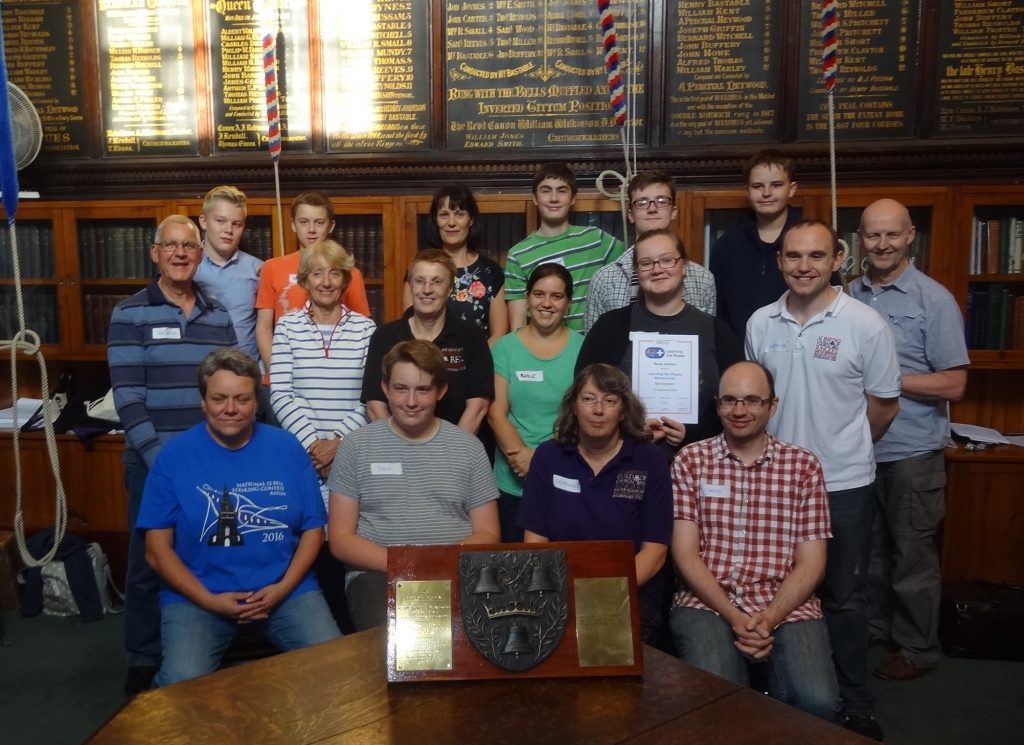
Andrew Booth is the first person in Docklands to reach Learning the Ropes Level 5. On September 17 he was invited, along with all the others who have achieved level 5 so far, to an expenses paid ‘Masterclass’ with the St Martin’s Guild, regular winners of the National 12 Bell Trophy, in Birmingham, home of the Birmingham School of Bell Ringing.
The day started with an introductory session, led by Stephanie Warboys, focussing on striking. Everyone listened to six video clips of ringing and then discussed the faults. Stephanie explained that the Birmingham ringers place great importance on discussing striking; even the most experienced ringers are never satisfied with their striking yet it is the elephant in the room that so many ringers seem unwilling to face. She also explained that no-one should take it personally later in the day if it was pointed out that someone’s backstrokes or handstrokes were quick or slow. In Birmingham feedback like this is the norm. Ringing is a team exercise and it is important for everyone to work together to optimise the performance.
The session also covered the theory of Stedman and how this doubles principle extends very easily to 7, 9 and 11 bells. Despite its simplicity, it is ‘hyper-musical’ and even the most advanced ringers really enjoy ringing it, so it provides an excellent progression path to ringing on higher numbers. As Stephanie explained repeatedly through the day, if you can ring Stedman Doubles, you can ring Stedman Triples, and if you can ring Stedman Triples you can ring Stedman Caters, and if you can ring Stedman Caters you can ring Stedman Cinques, and you will be made very welcome at any of the established centres of 12 bell ringing up and down the country.
We then headed across to St Philip’s Cathedral for the first of our practical sessions. We started on the middle six of this excellent ring of bells. Some of the participants, including Andrew, ringing Stedman Doubles for the first time, with others practicing Cambridge Surprise Minor. We then finished with the participants ringing two at a time in some rounds and call changes on this crystal clear sounding ring of twelve, with Stephanie emphasising the need to get those backstrokes up and everyone, including some of the best 12 bell ringers in the Country, concentrating on the striking.
After just over an hour and half’s intensive practice we then walked the short distance to St Paul’s in the Jewellery quarter, home of the Birmingham School of Bell Ringing. By some strange coincidence St Paul’s in Birmingham is at the top of Ludgate Hill – or is it just a coincidence? The participants then had a further three hours of intense practice with the multi-award winning Birmingham band. Lunch was served in shifts in the teaching room below the ringing chamber, so that ringing could continue without a break, and everyone was able to see the Birmingham ringers ART Module 1 and Module 2 certificates proudly displayed in the wall.
During the afternoon, Andrew moved on to ringing his first few courses of Stedman Triples, whilst others progressed on to ringing Stedman Caters for the first time. Those practicing Cambridge also rang Primrose Surprise for the first time. They did this by concentrating on hunting across the lead end and being aware of how the method was related to Cambridge, rather than learning a whole new blue line. As Stephanie explained, the helpers faces lit up as this was the key to ringing many other methods simply and easily.
The day ended with an hour and a quarter’s ringing at St Martin’s in the Bull Ring. Two at a time the participants rang rounds and call changes on 16 bells, with the crack Birmingham band. Again, striking was emphasised, especially the need to get those backstrokes up and hold them there. We then rang plain hunting on 11, Stedman Caters and Stedman Cinques, with one of the participants ringing a very well struck course of Stedman Cinques for the very first time. The ringing room at St Martin’s is very historic and atmospheric and Stephanie pointed to the peal boards for the very first peals on fourteen and sixteen bells, and which several of those helping today had actually rung in.
Learning the Ropes is about mastering the basic skills of bell-handling and striking, right from the outset, and to reach Level 5 the requirements include being able to do this sufficiently well to have rung quarter peals in two different doubles methods and one minor method inside. The day showed that once these basic skills have been mastered, with good support it is possible to make very rapid progress indeed, all the way to ringing methods on 10 and 12 bells.
At the conclusion Stephanie and the Birmingham ringers were thanked for their hard work, both in organising the event and in ringing throughout the day, to inspire others and help put so much back into ringing.
Participants were presented with certificates and then had their photograph taken with members of the Birmingham band with the National 12 Bell Trophy in front, and left with a goody bag containing a commemorative mug for the day.
Next year it is planned to repeat the Masterclass with those who reach Level 5 this year, so you have just over three months to do this!
Roger Booth
